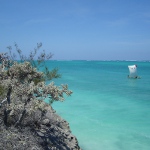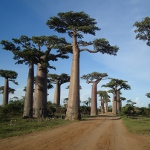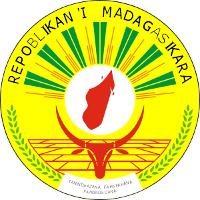TRAVEL PROPOSALS
If you have not yet organised your trip to Madagascar, we have prepared some itineraries that will allow you to reach your destination and at the same time you will discover fantastic places that you'll never forget.

Itinerary Route Nationale 7
This itinerary is recommended if you have 2 weeks. The first leg of the journey Antananarivo - Tulear by land and return Tulear - Antananarivo via plane AirMadagascar.
DURATION: 15 days
NIGHTS AT SHANGRI-LA LODGE: 3 nights
STAGES OF THE TOUR: Antananarivo, Ambatolampy, Antsirabe, Ambositra, Parco di Ranomafana, Ambalavao, Parco dell'Isalo, Ilakaka, Tulear, Ambatomilo

Nature trail
This route is recommended for nature lovers and those curious about the unspoilt landscape of south-west Madagascar.
DURATION: 19 days
NIGHTS AT SHANGRI-LA LODGE: 3 nights
STAGES OF THE TOUR: Antananarivo, Ambatolampy, Antsirabe, Morondava, Miandrivazo, Belo sur Tsiribihina, Parco dei Tsingy di Bemaraha, Manja, Belo Sur Mer, Ambatomilo, Tulear, Ilakaka, Parco dell'Isalo, Anja, Fianarantsoa, Ambositra, Antananarivo
Below is a description of the places that we recommend and that for the most part are included in our organised itineraries.
Route Nationale 7 is a fully paved road that separates Antananarivo and Tulear and covers about 1000 km. This is an unique opportunity to discover the south of Madagascar, which is little known compared to the white beaches of Nosy Be in the north of the island, but still popular with visitors who often rent a car to make this journey and stop along the way. The capital Antananarivo is ideal for those who love shopping! Ethnic Artisanale Marché de la Digue, Andravoahangy and Pochard, are addresses you need to know if you are interested in buying rare handicraft items, while the Marché des Pierres specialises in precious stones. Also in the capital, you can buy the spices that have made the history and richness of Madagascar, such as vanilla. Madagascar was the first manufacturer in the world of vanilla and this is on sale everywhere as slats or as essence to take home.
South of the capital, you will find the rice fields and traditional stone buildings of the region of the central plateau of Madagascar. The area at the foot of dell'Ankaratra, near the village of Ambatolampy, is famous for the workshops and the fields of mimosa, especially in the months of July and August. The next stop is the spa town of Antsirabe with its workshops for processing zebu horns and for fabrics of cotton and wild silk. Nearby, is the crater lake of Andraikiba and the legendary Lake Tritriva. Through a typical landscape of plateaus adorned with terraced rice fields, you will then find Ambositra. This small town is the commercial crossroads of the tribes Zafimaniry. The artisans of all nearby villages come here to sell their items of carved wood and along the way; there are many stalls where you can buy magnificent sculptures and bags in raffia. Continuing south, just before reaching Fianarantsoa, you come across the Ranomafana National Park. This Park is known for its rich flora and fauna, with a dense and humid tropical forest, home to 26 species of mammals including 12 species of lemurs, not to mention the very rare Hapalemur golden, and 96 species of birds and hundreds of orchids. The fauna and flora of the Park attracts both foreign and domestic researchers, particularly Americans who created the Research Centre VALBIO.
You then come to Fianarantsoa, the regional capital of Betsileo and the gateway city between the highlands and the typical landscapes of the South with their spiny forests and baobab vegetation. The route continues towards the park dell'Andringitra, near Ambalavao. The area is famous for rafting in its small rivers and is a destination known to the paragliders as a site for free flight, where the weather is very stable and landscapes are incredibly beautiful. At the foot of the cliff of Tsaranoro, Camp catta, from where several walks start. The cliff of Tsaranoro into the Andringitra National Park is the best place for rock climbing and the quality of the granite is excellent. In this area weather conditions are ideal for at least 9 months of the year and the most favourable season for climbing is from June to November. In addition, the Pic Boby is the highest peak of Madagascar (2658 m).
In the area of Ranohira, you can sleep in the Isalo Rock Lodge facing the National Park of Isalo. The park is spectacular, thanks to the deep canyons, natural pools, caves, the palms of Madagascar and of course lemurs, a true national icon. You can spend at least two days exploring the ruins of the massif of Isalo, its impressive granite reliefs and sculptures dating back to the Jurassic period. Going through the canyons along the way, you will come face-to-face to the lemur fulvus rufus and you will meet with pachypodium rosolatum, a desert plant, a dwarf baobabs of 50-60 cm embellished with pretty yellow flowers. The natural pools for swimming and a visit to the natural arch at sunset are just some of the attractions offered by the Park of Isalo.
Thirty miles continuing south, you cross Ilakaka; the country of the seekers of sapphire. The different forms of Aloalo (artistically carved wooden funerary stelae) decorated with drawings; adorn the tombs of Sakavala, Mahafaly and Antandroy, which you find along the way. The last stop of the Route Nationale 7, through a landscape typical of southern Madagascar (dry vegetation, baobabs and thorny forests), is Tulear, the Sun City, built on the Tropic of Capricorn. Here, you finally see the ocean! In Tulear you can have a nice shopping to the characteristic shells' market Jardin de la Mer.
Around Tulear, there are some places of interest within a short distance, such as Miary, Sarodrano and Saint Augustin and Anakao can be reached by sea. But the beach and the sea, without any doubt, is the best in all respects, found in Ambatomilo, namely in the vicinity of our Shangri-la Lodge! So, from Tulear, a 4x4 will transport you on an exciting, although slightly inaccessible, road where approximately every 125 km you can enjoy pristine beaches, fishing villages and typical flora of the spiny forest (baobab, famata, tamarind, arofy). Ideal for those of you who love adventure and nature!
3 km north of the village of Ambatomilo, you will find Shangri-la Lodge, where the charming bungalows are in prime positions to offer stunning sea views. The next day you can enjoy this magnificent place, where the staff are helpful and welcoming and where Malagasy and international cuisine is served at our restaurant. We also organise activities, which can be found in the section Services & Activities. Continuing north, we arrive in the town of Morombe, a fishing village halfway between Morondava and Tulear, on the south-western region of Atsimo-Andrefana, literally translated as great beach. Morombe is essentially a seaside resort, even though there are no services and receptive structures that have become a trait of many coastal towns in Madagascar.
We then come to Manja and then the cities of Belo Sur Mer, where you can visit the Kirindy Mitea National Park, which is one of the most important stretches of dry deciduous forest of the island. Inside the Park, live 6 different species of lemurs, present with high density. The forest Kirindi is the only place where the elusive pygmy-mouse lemur (Microcebus myoxinus), has been observed and has the nocturnal habits similar to Mirza coquereli, another species in the park. Morondava is the destination that follows, which is rich in flora and fauna. You can better admire them in the forests of Andranomena of Analabe of Manamby and Kirindy. The reserve Kirindy (namesake of the park described above) is the most popular in the region and is located about fifty kilometers north of Morondava. You can also spend the night in the reserve and cover the circuit at night.
The region presents a quirky and original type of vegetation called baobab. The Allée des baobabs is one of the most beautiful landscapes of Morondava in Madagascar. This popular trail starts about 15 km from Morondava on the road to Antananarivo. Large baobabs called Adansonia grandidieri, the majority of a unique variety, are arranged on both sides of the passage. A photo safari is very interesting especially at sunset as it offers unique pink and blue reflections that rise on the horizon. The national park of Tsingy de Bemaraha is accessible from Morondava, at a distance of 200 km. The main attraction of the park is centered on the discovery of Tsingy, classified as World Heritage by 'Unesco. Except the Tsingy, the park is made up of the river gorge of Manambolo, forests, lakes and mangrovi. The park is rich in endemic fauna; one can note the presence of 13 species of lemurs, 54 species of reptiles and 15 species of bats. The return trip to the capital Antananarivo from Morondava can be hard to tackle in one day, so it is advisable to split the trip in two stages, stopping to Antsirabe on the way.


















